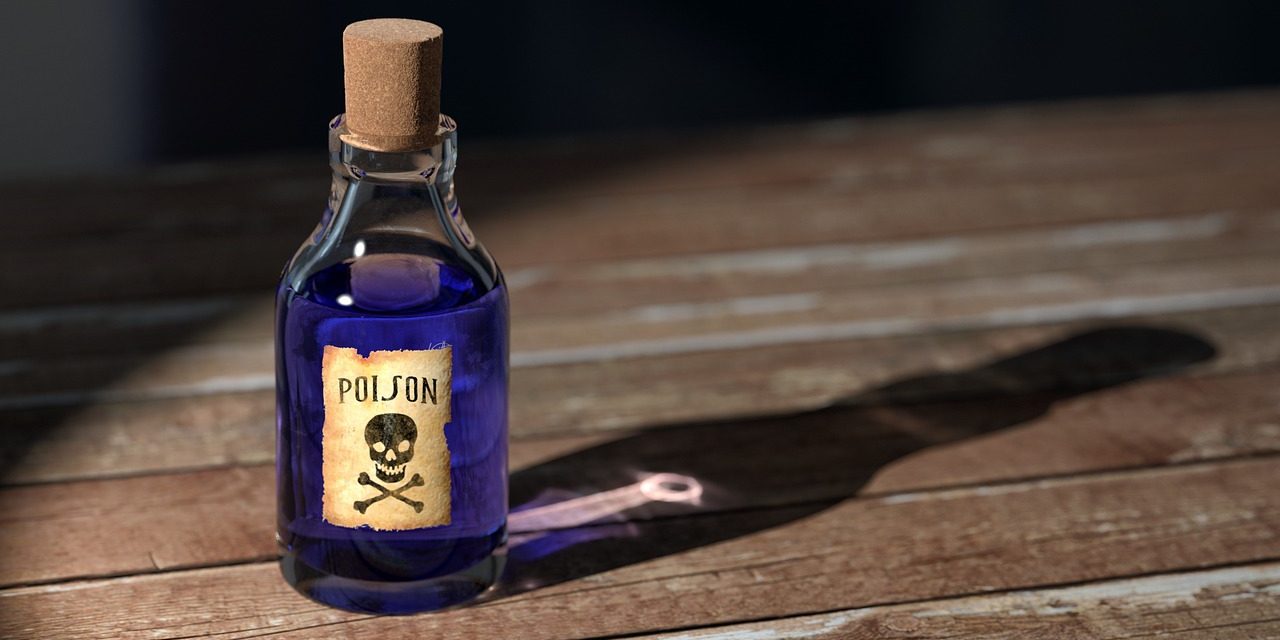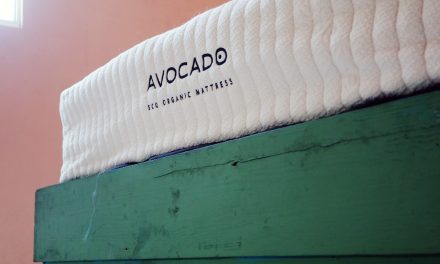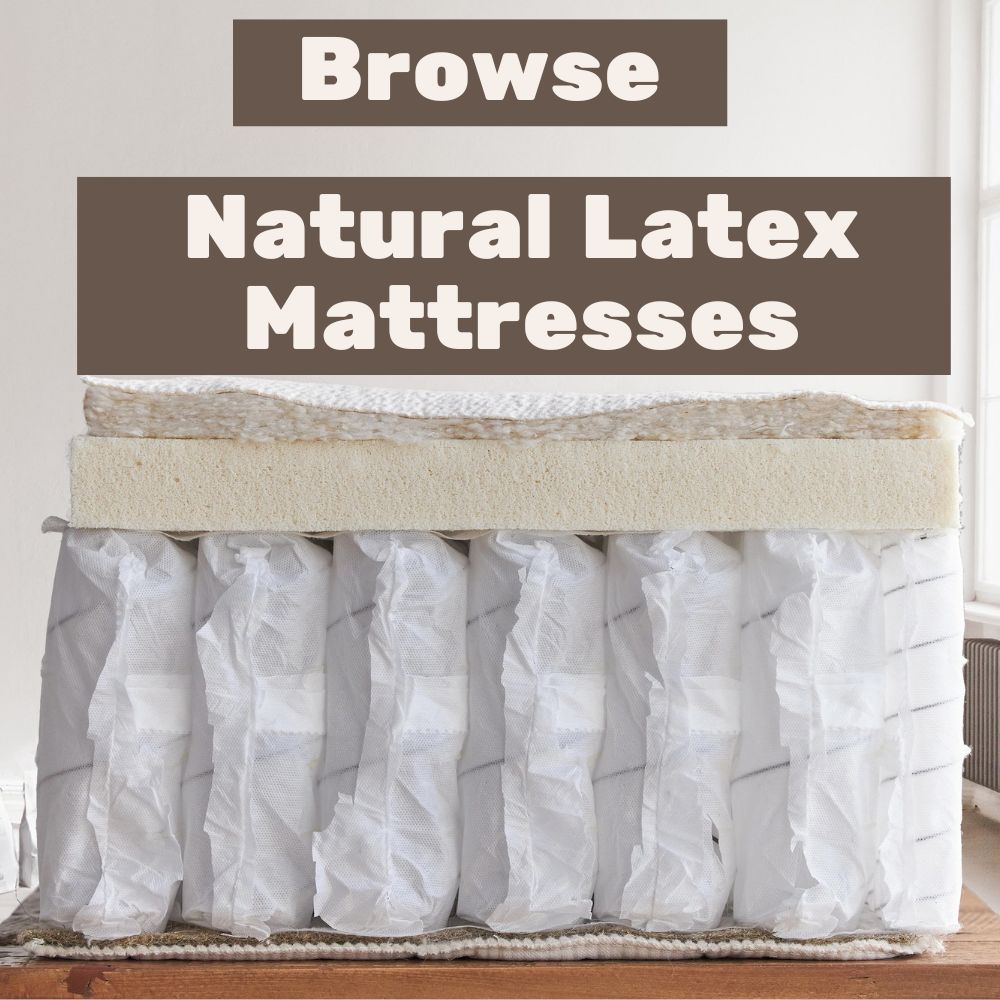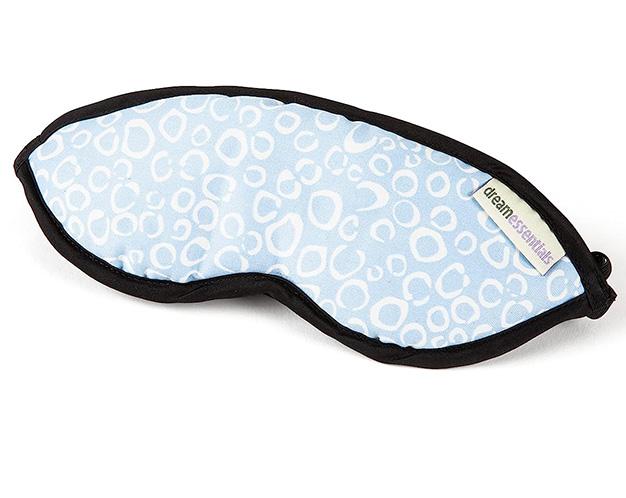Table of Contents
Your mattress should be a place of rejuvenation, comfort, and sanctuary. When looking for a new mattress, the filling and padding materials are one of the first concerns. With all the different types of materials on the market today, there is something out there for everyone. From the classic innerspring to gel and memory foam it can be tough to decide what is right for you.
Firmness and size are usually the first considerations to be made when choosing a new mattress, and after that, you’ll decide what material will be best for you. But how often do you hear about the effects of the material being used, other than the good ones? Chances are not very often, at least not from the manufacturers who don’t want you to know what those materials are. If you are shopping solely on price, you may be getting a toxic mattress that is full of chemicals that off-gas volatile organic compounds into the air.
Unfortunately, many companies advertising a mattress that you will spend a great deal of time on neglect to tell you what the downside to using their products may be. That’s why we’re here, to discuss what kind of impact sleeping on a toxic mattress can have.
Here’s a list of the most common materials in a toxic mattress that may have negative health effects that you could encounter:
- Industrial Cotton
- Polyurethane Memory Foam
- Polyester
- Adhesives for bonding mattress layers
- Flame retardants
Now that we have a basis of the most common materials found in mattresses today, we can further go into detail about what unwanted effects they may be having on us.
Industrial Cotton
Cotton has been used as a mattress-building material since the early 18th century. It is used as a softening and padding material. Being one of the most popular mattress materials, chances are you have probably slept on a mattress that uses cotton in some shape or form.
What you may not know is that cotton is grown on 2.4% of the world’s cropland, yet at the same time is responsible for 24% and 11% of the world’s insecticide and pesticide sales! Not only do these chemicals have negative health effects on the workers caring for the cotton crops and the environment they’re used in, but they’ll also be affecting your health as well.
Included with those pesticides is boric acid, which is also used in mattresses to prevent bed bugs and bacteria from thriving.
8 out of the most common 10 pesticides used on industrial cotton have been classified as moderately to highly hazardous. Over time these pesticides can potentially lead to serious health issues like developmental, neurological, and respiratory problems.
To make matters worse, the pesticides used in cotton farming seep into the soil and water of the area, contaminating the surrounding environment. Thousands of deaths are reported around the world every year from pesticide poisoning.
Polyurethane Memory Foam
Memory foam mattresses are well known for their comfort and durability and have become some of the most popular beds on the market today.
Polyurethane memory foam was originally developed in the 1970s for NASA as a material to create more comfortable cushioning and effective crash protection for airline pilots and passengers. Memory foam became a popular material in mattresses later because of its hypoallergenic properties, mold resistance, and easy maintenance. The material adjusts to pressure and returns to its original form when the pressure is removed.
Polyurethane is made by combining polyols and diisocyanates, which are both products of crude oil, meaning that it is an artificially made material. Polyurethane is often combined with other compounds in order to make memory foam:
- Polyvinyl chloride (PVC): derived from vinyl chloride, a known carcinogen
- Formaldehyde: an eye, nose, and throat irritant, and potential cancer agent
- Boric acid: potentially causes reproductive, developmental, and neurological damage
- Antimony Trioxide: an irritant
- Petrochemicals: chemicals derived from petroleum and natural gas
- Diisocyanates: Flame retardants and known carcinogens
- Isocyanates: can cause asthma attacks at minimal toxicity levels
The EPA has confirmed the toxicity of the abovementioned chemicals used in the manufacture of polyurethane products, which include the apparel, automotive, building construction, and medical industries. Yet it is still one of the most commonly used manufacturing materials.
These chemicals are released from the mattress material through use, by a process called off-gassing. This process occurs when the chemicals used to manufacture the mattress break down and are released as gases. This process has been known to cause eye and throat irritation, nausea, headaches, and difficulty breathing.
These chemicals are usually more stable in finished products, but can still be present in certain conditions, and can be detected by a strong odor.
A common problem consumers face with memory foam mattresses is how they retain heat. To solve this issue, manufacturers began utilizing gels in their memory foam mattresses. They either used a gel padding on top, or gel added to the foam. Consumers have reported that initially, the gel does keep the mattress cool, but the effect does not last. So not only does it lose its effect the longer you are on it, but it is also adding to the chemical cocktail you are sleeping on.
It’s also important to mention the environmental impact of polyurethane foam. Billions of pounds of products are made with it every single year, and oftentimes many of those products end up in landfills. Polyurethane products do not decompose on their own.
So not only are memory foam mattresses potentially dangerous to your health and your personal home, but they also add to the growing waste problem on our planet.
Polyester
Polyester became popular and widely used in the late 1950s and its use continued to expand until the 70’s when better alternatives were found. It was known for being extremely cheap and convenient to manufacture, as well as being durable. However, it was also known for being very uncomfortable and scratchy, particularly affecting those with sensitive skin.
Today polyester can still be found in many different products and is commonly mixed in with a cotton blend to try and eliminate the scratchy and uncomfortable sensation of polyester.
Polyester is a compound that is derived from petroleum and belongs to a family called polymers. Polymers are formed by combining different monomers. The polymers themselves are said to be relatively stable, but the monomers used in the formula is what we are concerned about. This is because there will always be some monomers left that did not react to form the polymer.
These leftover monomers are released through off-gassing, as explained above, and can also potentially be water-soluble, and very toxic. Because of the high toxicity of these molecules, it takes a very little amount of them to become harmful to humans.
Polyester is comprised of a combination of precursors of which most are carcinogenic, and all of which are poisonous in their monomer form. The process of making polyester does result in these monomers reaching stable forms, but it is unlikely that 100% of them reach this stable position.
Even if we assumed that all of the monomers used to make polyester reach a stable form by the time they get to the consumer, they still pose a very real health risk to the people who are involved in the manufacturing process, as well as the environment.
Polyester fabric is also commonly treated with flame retardant chemicals which can also pose significant health risks.
Mattress Adhesives
The next topic we will discuss is mattress adhesives. These are the chemicals used to hold together the different layers and components of the mattress. The most common adhesives used in mattress manufacturing are:
- Methylene Chloride based adhesives
- n-Propyl bromide-based adhesives
- Acetone-based adhesives
Methylene chloride is a very common adhesive, with very dangerous effects on the human body, especially those who handle it in a manufacturing setting. It is easily inhaled and is converted to carbon monoxide once it is in the body. This makes it especially dangerous for those with heart and lung disease, and pregnant women. Methylene chloride has also been considered a cancer-causing substance by many states and agencies. It can also be absorbed through the skin and can enter breast milk as well as reach the fetus in pregnant women.
n-Propyl bromide is a chemical used in adhesives and is similar to compounds known to have dangerous health effects. These effects include the possibility that this compound may be a hematological, reproductive, and neurological toxin. Some common effects reported by workers exposed to n-propyl bromide include leg weakness and stumbling, numbness and tingling in legs, headaches, dizziness, nausea, memory problems, and concentration difficulties.
Acetone is another solvent commonly used in adhesives. Health effects of the chemical include respiratory issues, coma, kidney, and skin problems at very high concentrations. It can also cause shortness of breath and abdominal pain at lower concentrations.
Flame retardants
In 2007 a new rule was put in place to ensure that manufacturers produce mattresses that can withstand a two-foot-wide flame from a blowtorch for 70 seconds. 92% of mattress manufacturers use highly controversial chemicals and compounds to achieve this. The reason they use potentially dangerous chemicals simply boils down to cost efficiency. Some common chemicals found in flame retardants include:
- Boric acid
- Antimony
- Decabromodiphenyl Oxide
- Formaldehyde
Health issues that have been linked to exposure to these chemicals include skin irritation, learning and memory difficulties, cancer, heart, lung, and kidney damage, as well as birth defects. Chronic exposure to these chemicals can lead to them reaching parts of the body such as the bloodstream, breast milk, and umbilical cord blood.
These new regulations were put in place in an attempt to create a new safety standard to prevent fatalities from house fires, but its implementation has led to a whole new set of health risks.
Healthy alternatives
After reading about all of these dangerous components that go into making a toxic mattress, you’re probably realizing you have slept on one, and still may be sleeping on one. It would be understandable if you develop a bit of anxiety around this everyday aspect of our lives. But that’s why we’re here, to show you that there are ways to achieve a good night’s rest, and be sure that you’re safe at the same time. Your mattress should be something that brings you comfort, not something that slowly poisons you in your sleep.
1. Manufacturer transparency
The first thing you should look for in a new mattress is the transparency of the manufacturer. You want them to put everything out there in regard to what goes into their product so that you know exactly what you’re getting. If you feel like they are holding anything back, move on to the next manufacturer. There are plenty of healthy and organic mattress manufacturers out there that can meet your needs. Manufacturers that are certified by third-party organizations are more trustworthy than companies that simply claim that the materials within the mattress are 100% natural. Check out my list of the 5 best natural latex mattresses, all of which are backed by 3rd party certifications.
2. Organic cotton and wool
One aspect you should look for is organic fibers. Make sure the product clearly states its use of organic cotton, with organic filling material, all-natural dyes, and unbleached material. This will be a healthy alternative to the chemical-soaked industrial cotton mattresses we discussed earlier in this article.
Organic wool is also a good option for a natural alternative to standard polyurethane mattresses. The wool comes from sheep, which do not need to be killed to harvest, and is free from hormones, chemicals, and pesticides. Studies have shown that organic wool mattresses reduce back pain as well!
Another advantage of wool is that it is flame resistant. Wool is often used as a cover on mattresses to prevent burning, which can eliminate the need for those nasty flame retardants. Wool is flame resistant, but it is not flameproof. It will not be as effective as the chemicals used in polyurethane toxic mattresses, but it is still the healthier option overall.
3. Organic Latex
Maybe you’ve decided that a memory foam mattress is the most comfortable option, but don’t want all the nasty chemicals that come with it. Well, there’s an alternative to that too! What you’re looking for here is natural and organic certified latex. Natural latex is created from rubber tree sap that gets frothed and baked into a natural foam state. It is also important to note that some people have a natural latex allergy, so make sure you’re not one of them before ordering a latex mattress! Another advantage of latex is its durability and performance consistency.
4. Organic Innerspring mattress
Innerspring mattresses made using organic and natural materials are a healthy alternative to polyurethane mattresses, simply because they use metal coils and organic padding and covering, instead of dangerous and chemical-filled polyurethane. The coil layer is usually at the bottom of the mattress and is typically comprised of individually wrapped coils that promote ventilation, offer zoned support, and attenuate motion transfer. Check out how hybrid mattresses compare with latex-only mattresses in my natural latex mattress comparison chart.
5. Notes on natural and organic certification
100% organic mattresses do not exist. They will be a combination of organic and natural materials. In order to be truly organic, a product must be comprised of at least 95% organic material and be certified by a third-party organization. For latex, the only entity that truly certifies the material is an agency called Control Union. Mattresses can be labeled “natural” and “eco-friendly”, and still only contain a small portion of natural material, since these terms are still unregulated.
In terms of specific certifications look for “GOTS Certification”, which stands for Global Organic Textile Standard, and “GOLS Certification” which stands for Global Organic Latex Standard. Oeko-Tex Standard 100 does not mean anything in regard to organic materials, but it does regulate the use of volatile organic compounds and prohibits the use of flame retardants and harmful dyes.
Putting the matter to bed
Now that you know what goes into the mattresses you’ve been sleeping on, we hope you can use this info to make very important decisions in regard to your comfort and health. With all the time you spend on your mattress, which rounds out to roughly ⅓ of your life, this is definitely a decision that should not be taken lightly. You should be able to get the most restful sleep possible, without having to worry about what hidden effects your mattress may be having. With all the options on the market today, it can be tough to decide what is best for you and your family, and I hope that I’ve made that decision a little bit more straightforward.
















